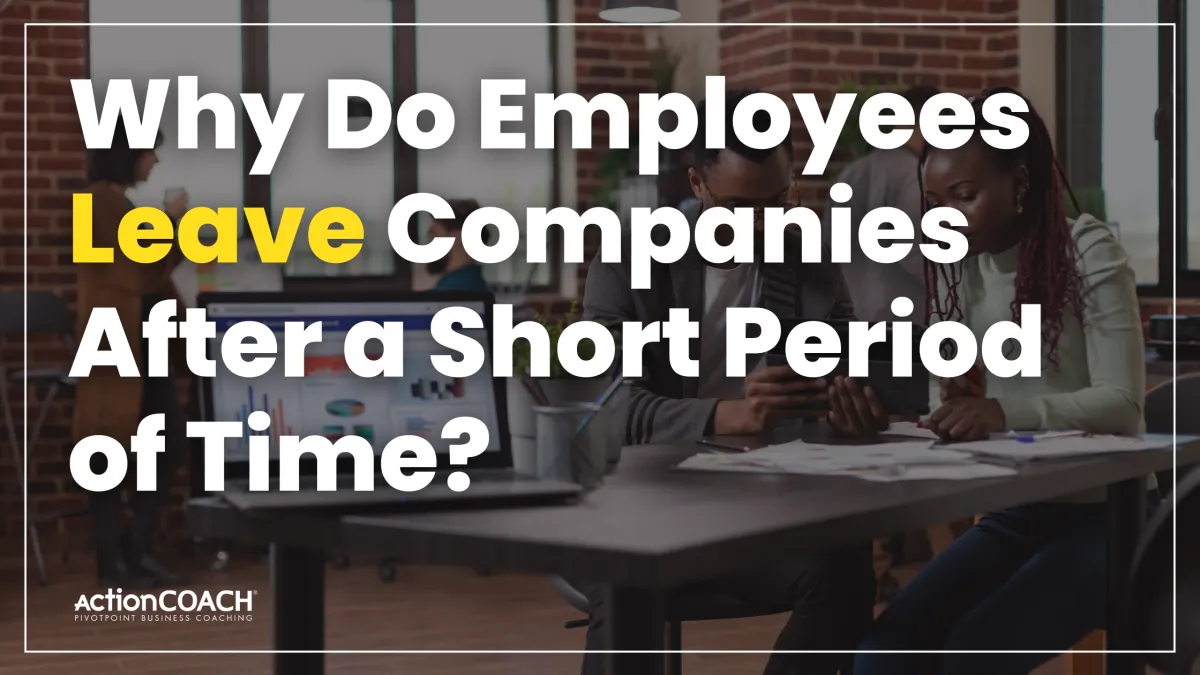
Why Do Employees Leave Companies After a Short Period of Time?
Employee turnover is a significant challenge for businesses of all sizes. When employees leave shortly after being hired, it disrupts teams, hurts morale, and drains valuable resources. The reasons behind these departures can vary, but understanding why employees leave is essential to improving retention rates and building a thriving company culture. Let’s explore the key reasons why employees leave companies too soon and what businesses can do to prevent it.
1. Lack of Clear Role Expectations
Employees often leave when their role doesn’t align with what was initially promised. Miscommunication during the hiring process about job responsibilities and expectations can lead to frustration and confusion. When an employee feels they are not suited for the job or that the company misrepresented the position, they may quickly decide to leave.
Source: According to Gallup, lack of clarity around roles is one of the key contributors to disengagement, which leads to high turnover rates
Solution: Companies should ensure that job descriptions are clear and realistic. Regular check-ins and transparent communication from the start can help employees feel aligned with their roles and the company’s objectives.
2. Poor Onboarding Experience
A poor onboarding process is another major reason employees leave early. Onboarding is the first introduction to the company’s culture, processes, and expectations. If the onboarding experience is disorganized or lacks essential information, it can leave new employees feeling unprepared and disconnected.
Source: A study by the Society for Human Resource Management (SHRM) found that a structured onboarding process can improve employee retention by 82% and productivity by over 70%
Solution: Businesses should invest in a comprehensive, well-structured onboarding program that includes proper training, introductions to key team members, and an overview of company culture.
3. Limited Growth Opportunities
Employees want to feel that their hard work will pay off in the form of career advancement. When employees perceive that there is no room for growth, either in terms of skills or promotions, they may leave to seek better opportunities elsewhere.
Solution: Employers should provide opportunities for learning and career advancement, such as mentorship programs, leadership training, and clear career paths.
4. Toxic Work Environment
A toxic work culture is a major contributor to early departures. Whether it’s a lack of respect, poor communication, or a high-pressure environment, employees who feel uncomfortable or unsupported in their workplace are more likely to leave.
Source: The Harvard Business Review suggests that toxic leadership and workplace culture are directly linked to high employee turnover
Solution: Companies need to foster a positive, inclusive, and supportive environment. This can be achieved through open communication, conflict resolution practices, and leadership training that emphasizes respect and empathy.
5. Inadequate Compensation or Benefits
Competitive salaries and benefits packages are crucial for employee retention. If employees feel they are underpaid or not receiving adequate benefits, they may leave for better compensation elsewhere.
Solution: Regularly review and adjust compensation packages to remain competitive in the market. Offering a comprehensive benefits package that includes health insurance, retirement plans, and flexible working arrangements can help attract and retain talent.
6. Work-Life Imbalance
Long hours and unrealistic workload expectations can lead to burnout and dissatisfaction. Employees who experience a lack of work-life balance may eventually decide that the strain is not worth it, leading them to seek opportunities that allow for better balance.
Source: According to Gallup, employees with work-life balance are 43% more likely to feel engaged at work
Solution: Employers should encourage work-life balance by offering flexible work hours, remote work options, and clear boundaries between work and personal life.
7. Poor Management
Management plays a crucial role in employee satisfaction and retention. Poor leadership—whether it’s micromanagement, lack of support, or ineffective communication—can drive employees to leave. Employees who don’t feel valued or recognized by their managers are less likely to stay long-term.
Source: Research from Gallup shows that managers account for 70% of the variance in employee engagement
Solution: Provide leadership development and coaching for managers to ensure they can support, motivate, and engage their teams effectively.
8. Lack of Inclusion or Belonging
Employees want to work in environments where they feel accepted and valued. A lack of diversity or a workplace that excludes certain groups can lead employees to leave in search of a more inclusive culture.
Solution: Companies should prioritize diversity, equity, and inclusion initiatives. This can be done by fostering a culture of belonging, encouraging open dialogue, and implementing policies that support all employees, regardless of their background.
Conclusion
There are many reasons why employees leave companies after a short period of time, but understanding the underlying causes can help businesses address these issues proactively. By creating a positive, transparent, and supportive workplace, companies can improve retention rates, foster loyalty, and build stronger teams.
Want to discuss how to improve employee retention in your organization? Book a complimentary consultation today, and let’s explore tailored solutions for your business.
Need more insights on retention strategies? Check out our other resources on improving workplace engagement and leadership!
CRAVING MORE INSIGHTS?
Stay in the Loop! Sign up for updates and be the first to know when we post—just 3-4 times a month.
Copyrights 2024 | PivotPointActionCoach | Terms & Conditions | Privacy

